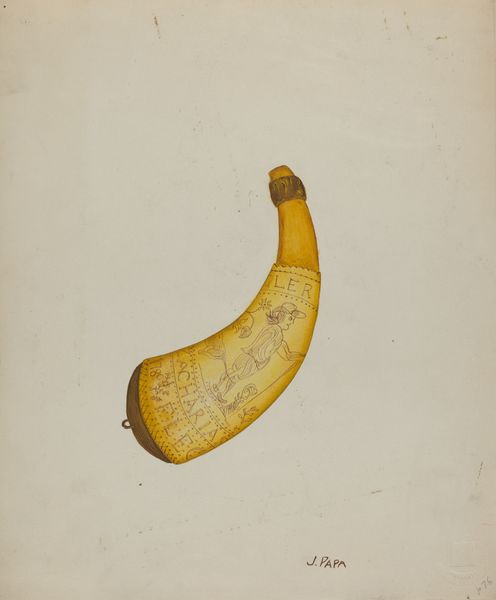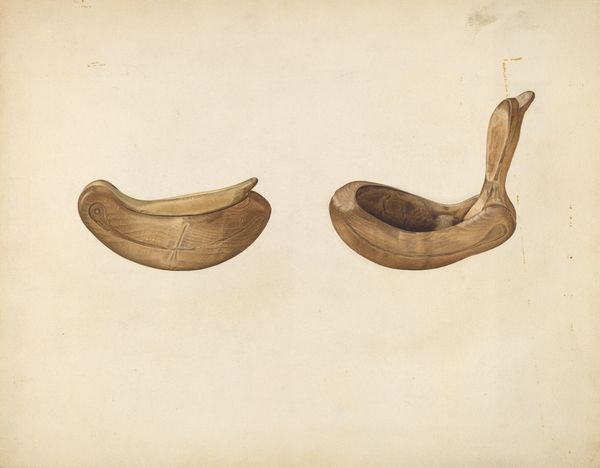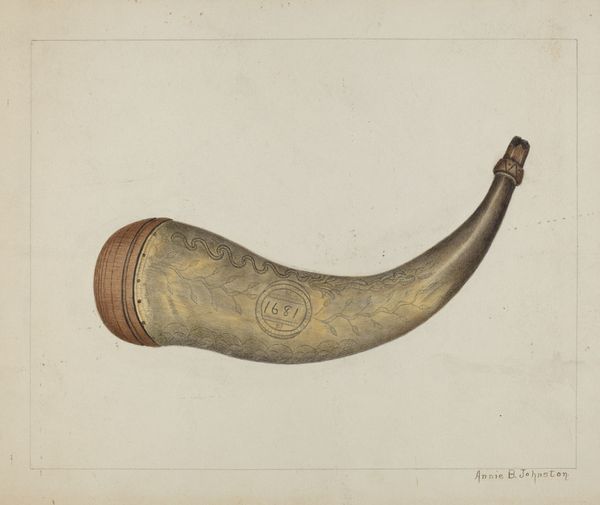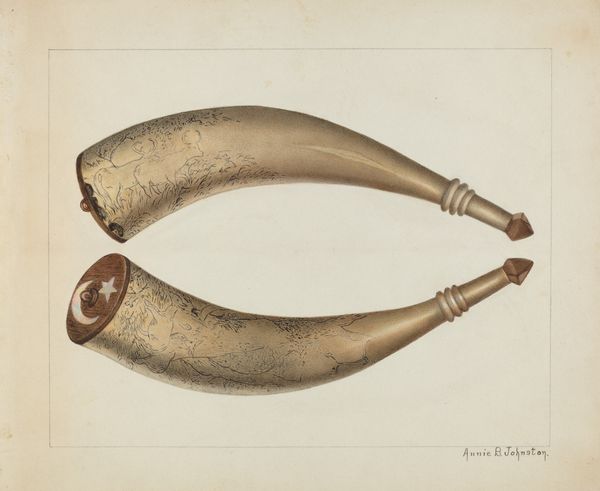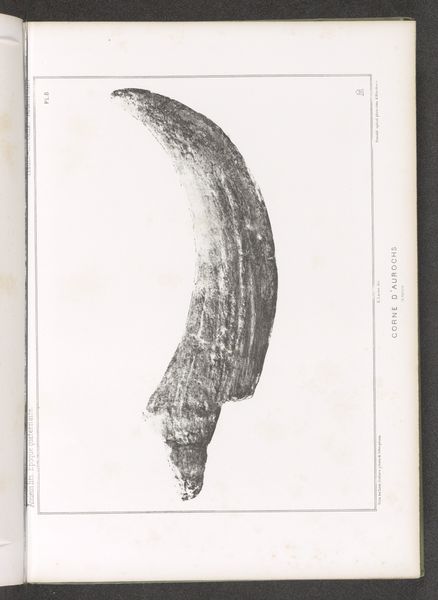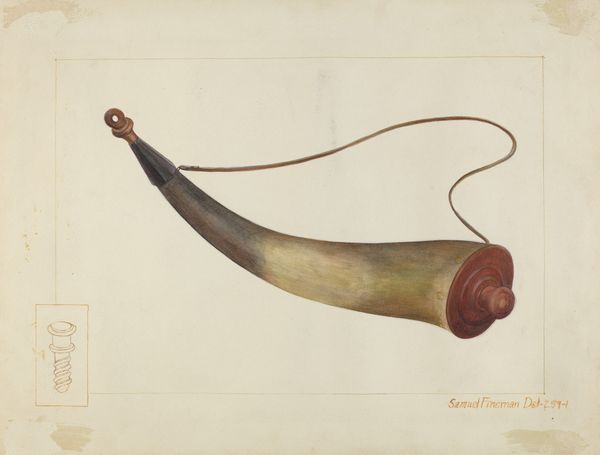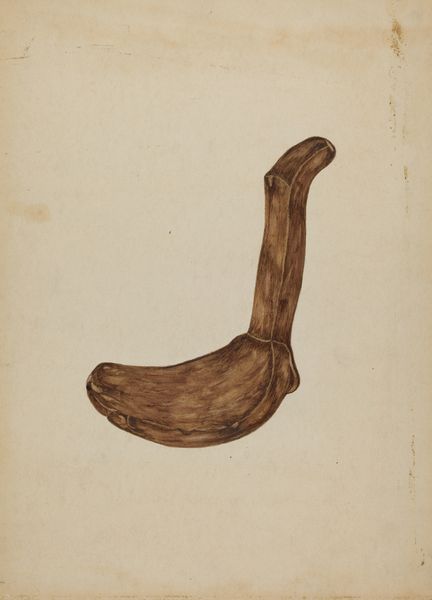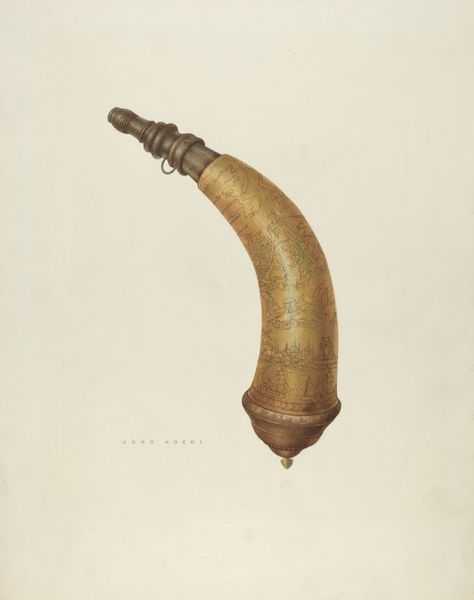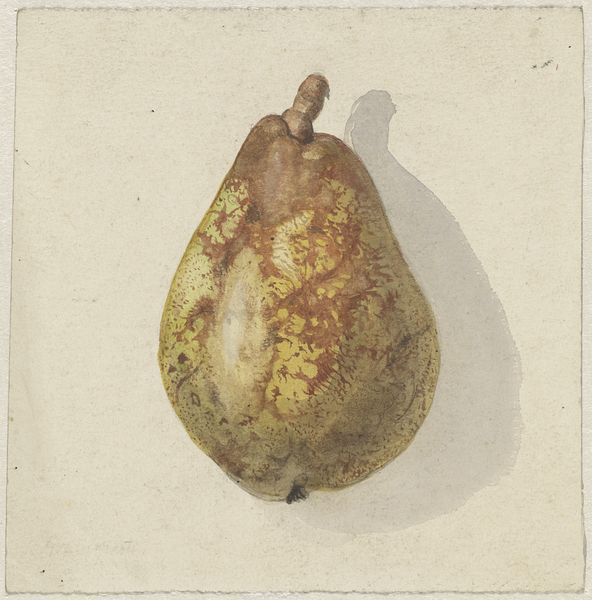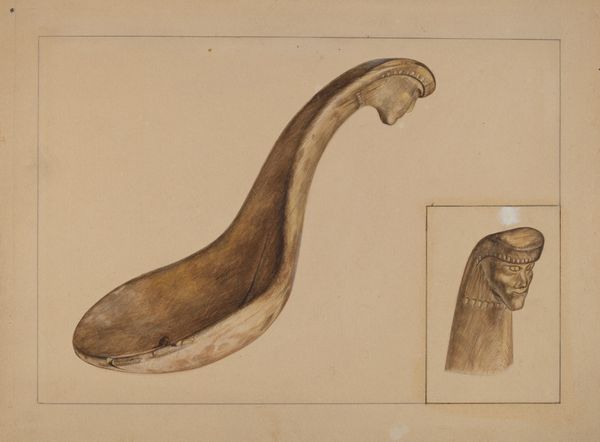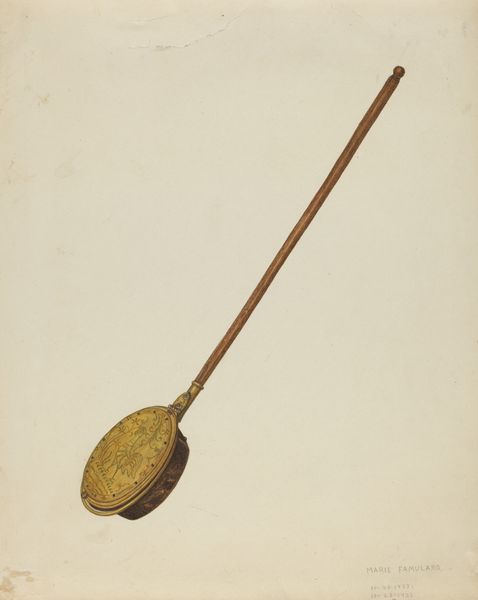
drawing, watercolor
#
drawing
#
watercolor
#
watercolour illustration
#
watercolor
Dimensions: overall: 28.2 x 23.3 cm (11 1/8 x 9 3/16 in.) Original IAD Object: 2 1/2" in diameter; 8" long
Copyright: National Gallery of Art: CC0 1.0
Editor: Here we have Annie B. Johnston's "Powder Horn," a watercolor and drawing made around 1938. It's a really delicate rendering of an object of war. I'm struck by how carefully the artist captured the textures. What draws your attention in this piece? Curator: This image raises some fascinating questions about labor and value. Johnston meticulously represents a utilitarian object, the powder horn, typically associated with hunting and warfare. Notice the "JP" and the date "1865" etched into its surface. Whose hands shaped this horn, and for what purpose? Editor: It’s interesting to consider it beyond just being decorative or even practical. Did Johnston have access to the actual horn? Curator: Probably so. How did she engage with the object itself? Was she interested in the labor that went into creating such items and its relation to colonial expansion and indigenous labor. How does watercolor elevate an everyday object and blur the boundaries between art and craft? Editor: So, by making a watercolor painting of it, she's turning something associated with utility and maybe violence into art, prompting us to think about its history and use. Curator: Exactly. The medium becomes a means to dissect its past, revealing a complex relationship with materiality, making, and the historical contexts of conflict and artistry. What could the year "1865" represent, in this context? Editor: Maybe when the horn was originally made or used? Seeing it like this makes me wonder about who made the actual powder horn in the first place and how it came to be marked with those initials. It's much more than just a picture, then. Curator: Precisely! By focusing on the object's material reality and social connections, Johnston implicitly comments on broader systems of production, ownership, and the often-unacknowledged labor embedded within seemingly simple objects. Editor: I didn't think about a simple object having such complex social relations surrounding it. It puts it in a different perspective.
Comments
No comments
Be the first to comment and join the conversation on the ultimate creative platform.
